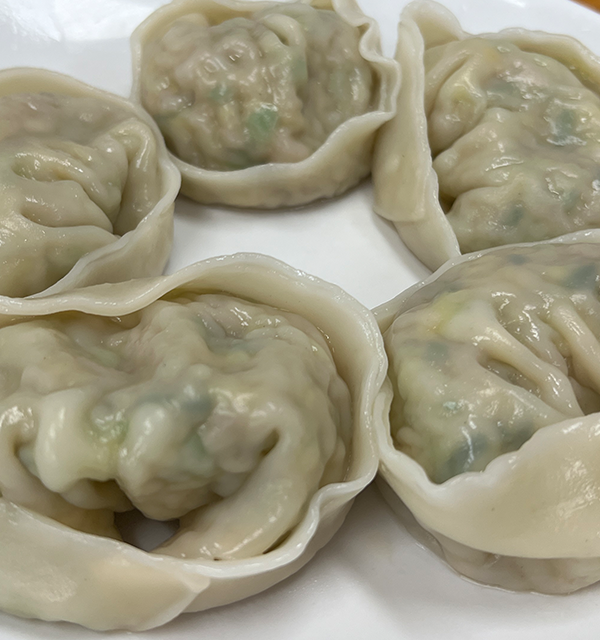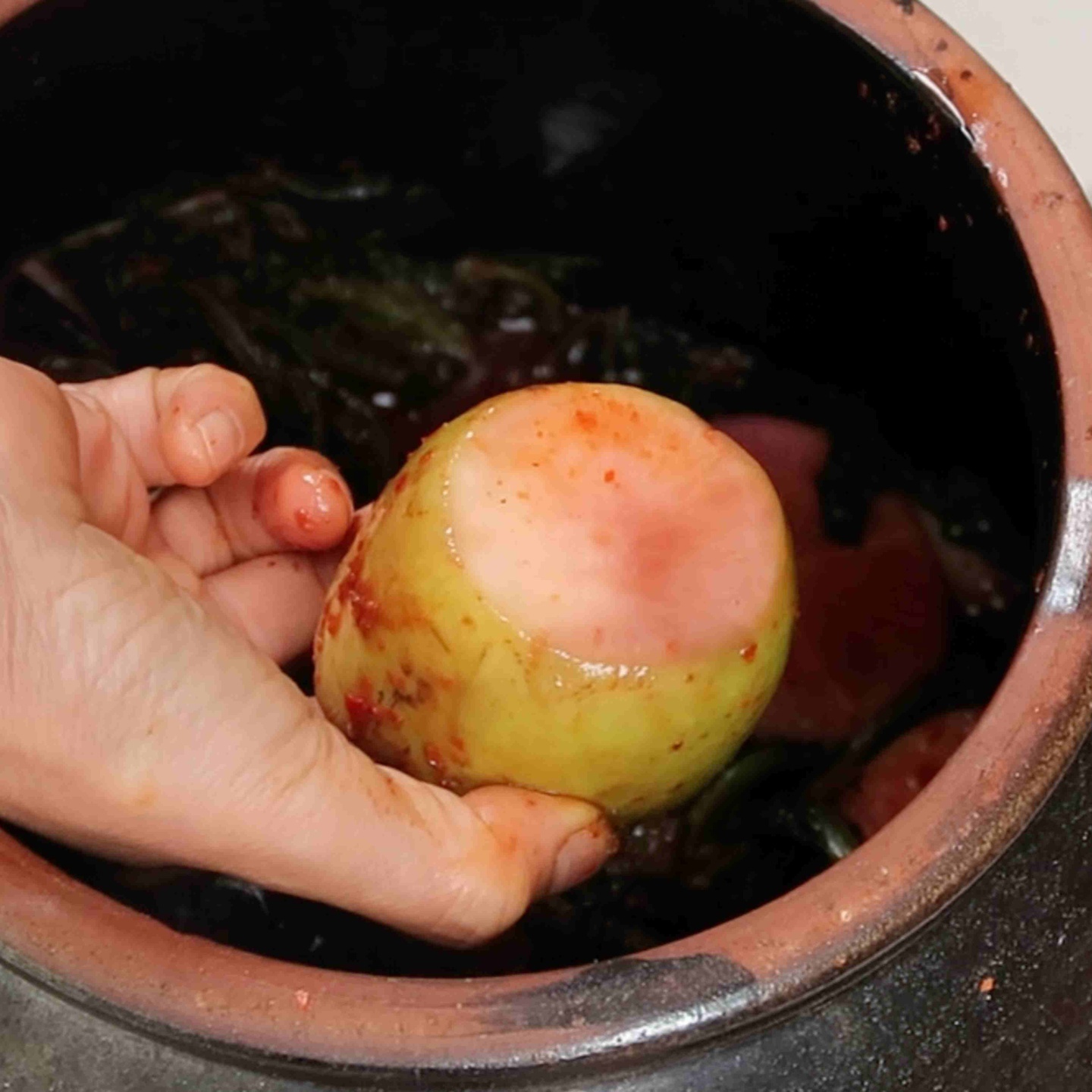A dumpling can be categorized into two parts: the skin and the filling. The dumpling skin can be broken down further based on the cooking method.
Dumpling skin is available in premade versions, both fresh and frozen. These are dumpling wrappers that you get at the store. They can be used for many kinds of cooking methods; steamed, deep-fried, pan-fried, or boiled. Read the package of the dumpling skin to see which cooking method is recommended. Some may just be used for any method.
Basic Korean-style dumpling skin is usually made with ingredients like flour, water, salt, oil, and egg (whole or egg whites). The dumpling skin is usually kneaded until combined and then rested in the fridge before use. The ingredients in the dumpling skin can vary based on the type of dumpling skin you are making and how it will be cooked. Some other kinds of large-sized Korean dumplings have a thicker skin and texture. An example is 왕만두. 왕만두피 may also contain sugar, yeast, and or baking powder to achieve the desired texture. The dough is then slightly fermented at room temperature before use.
There are other kinds of Korean dumplings (that I will not be covering in-depth) that are made with different starch-based dumpling skin; the base ingredient used to make Korean dumpling skin can vary a lot. Korean dumplings can also be called dumplings but look more like an American dumplings; think chicken and dumplings. An example would be a mixture of starch and ground seasoned fish that is shaped into an oval and steamed. When it comes to those kinds of “dumplings,” there is no separate skin, and they probably have a longer Korean history since flour was not a common, easily obtained ingredient in the past. There is even gluten-free dumpling skin that is made by using steamed cabbage leaves filled with seasoned protein and wrapped with a blanched chive.
Now that we understand the varieties of dumpling skins used in Korean dumplings, I want to focus on the homemade types that I will be breaking down further.
Home-made dumpling skin can be broken down into two categories:
- Dumpling skin for fried (군만두,튀김만두) and steamed dumplings (찐만두)
- Dumpling skin for boiling (물만두) or adding to soup
Since you can use (most, check the label) store-purchased dumpling skins for any cooking method, let’s talk about homemade dumpling skins for different cooking methods.
There are universal dumpling skin recipes out there that can work with any dumpling cooking method, but there are some recipes that are only good for dumplings that will be cooked a certain way. There are various reasons why this is but let me tell you a bit about the basic dough categories.
The first kind of dumpling skin works best when it is made into dumplings that you plan to pan fry or steam. If you use these dumpling skins to make dumplings for soup, the skin can rip or turn out weird. These kinds of dumpling skin may contain oil to make the texture soft, hot water, and higher gluten flour (강력분) instead of all-purpose flour.
The second kind of dumpling skin is best for boiled or soup dumplings. It can be made with all-purpose flour, cold water/room temp, and or egg whites. Adding egg whites to the dumpling skin can help prevent the skin from ripping.
Regardless of the type of dumpling skin dough, you need to let the dough rest after it is made. You must rest the dough to reduce the elasticity of the dough so that it is tighter and not sticky when you roll it out or cut it out.
How to Cut the Dumpling Skin Shape
Now that you have made your dough and let it rest, you can roll it out and cut it into circle shapes to make dumplings.
There are two ways to do this:
- First, roll out your dough as thin as you can. The dumpling dough shouldn’t be too thick, or it’ll overpower the ingredients inside. So, roll it out thinly. Now use a large cup or mason jar lid and cut circles from the flattened dough.
- The second way is to roll the dough into a log and cut it into even pieces. Then take a rolling pin and roll the small chunks of dough thinly into a circle.
After rolling out or cutting your dumpling, you can stack the dough circles on top of one another. As you stack your pieces of dumpling skin, add some extra starch or flour in between the layers so that they do not stick. Then cover the stack of dumpling skin with plastic wrap until you are ready to fill them with dumpling filling or store them so they do not dry out.
How to Store Fresh-made Dumpling Skin
You can store fresh-made dumpling skin in both the fridge and freezer. Before storing, wrap the dumpling skin in plastic and place it into an airtight bag. Try to remove as much of the air from the bag as possible so it doesn’t dry out. Also, don’t forget to place enough flour and starch in between each sheet of the dumpling skin.
If you freeze both store-purchased or freshly made dumpling skin, it can keep for a while. Ideally, use it within 6 months. After freezing, if you want to use the dumpling skin, defrost the dumpling skin in the fridge overnight and then use it within 2 days.
If you want to store your fresh-made dumpling skin in the fridge, then use it within 4 days.
If you want to store your store-purchased dumpling skin, then if the bag is unopened, use it within the recommended date. If the bag is open, use it within 1 week.


